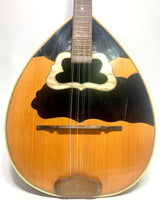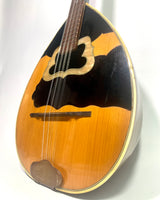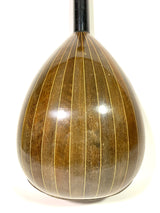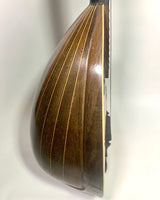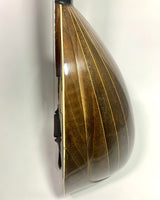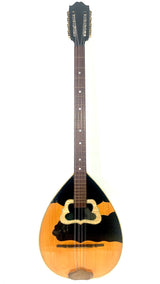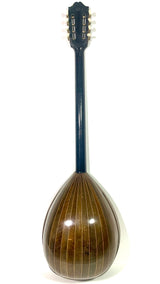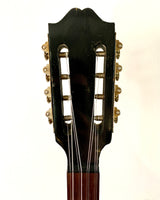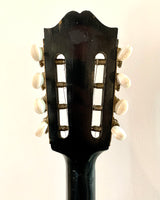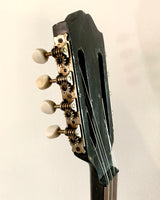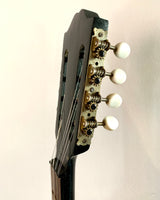Traditionnel
Bouzouki (Tétracordo) Greek 1960's
The bouzouki is an instrument descended from the pandura of Ancient Greece.
But bouzouki as we know it today arrived in Greece after the war in Asia Minor of 1919-1922.
Initially in those times, bouzouki had 3 choirs of two strings, making 6 strings in all. This is what we call a bouzouki trichordo.
And it was at the end of the 1950s that the tetracordo bouzouki, that is to say with 4 choirs of two strings or 8 strings, became popular.
It was popularized in particular by the virtuoso Manolis Chiotis who used it in a tuning close to that of the guitar.
This type of bouzouki has 8 metal strings, which are arranged in 4 pairs (C3-C4 / F3-F4 / A3-A3 / D4-D4).
Here we present to you a pretty Greek tetracordo bouzouki dating from the 1960s.
Technical characteristics:
- Top: Spruce
- Back: 17 ribs in walnut stained maple
- Fingerboard: Rosewood
- Width at nut: 31 mm
- Radius: Flat
- Frets: 26 frets
- Scale: 26.75" (680 mm)
- Profile: “D”
- Pickguard: Black 1 ply
- Hardware: Chrome is aging
- Country of manufacture: Greece
- Year: 1960's
- Finish: Natural / Black finish handle and head
- Decorations: Table edge fillets, rosette decorated with pearloid.
- Details: Traces of wear and normal aging given its age.
The bouzouki works perfectly well, the neck is straight and the low action setting makes it really pleasant to play.
Very easy to use for a guitarist or mandolinist.
With very good sound projection, good sustain and nice harmonics, this bouzouki is perfect for all musicians with a traditional Mediterranean register or those eager for curiosity to enrich other registers, such as folk, blues, rock or pop to name only the latter.
Delivered in a cover.

